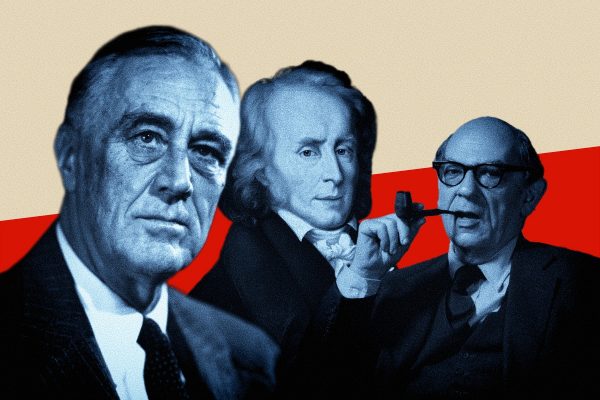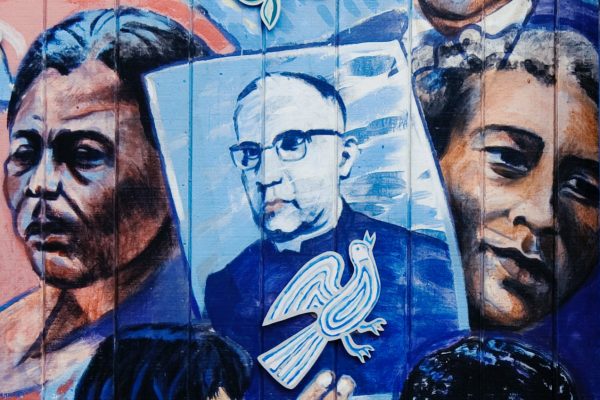Two weeks ago Fernando Haddad, the presidential candidate for Brazil’s Workers’ Party (PT), was down in the polls for Brazil’s runoff election, but picking up enough late support to justify last-ditch hopes for an upset. His campaign held a rally in Rio de Janeiro with a number of famous musicians. National hip-hop legend Mano Brown challenged those in attendance: “If we are the party of the workers, we need to know what the people want. If we don’t know, go back to the base and find out.”
Five days later, the PT received an unwelcome answer. The thundering victory of right-wing Rio de Janeiro congressman and former army captain Jair Bolsonaro of the Social Liberal Party (PSL) seems to echo the rise of similar figures across Europe and the United States. Steve Bannon, erstwhile ideological consigliere to Donald Trump, gave an interview the day after the election to Brazil’s leading daily newspaper Folha de São Paulo. He claimed to have followed Bolsonaro’s career “for years” and remarked upon his resemblance to Trump, Italy’s Matteo Salvini, Hungary’s Viktor Orbán, and Britain’s Nigel Farage.
The Bolsonaro phenomenon represents the success new right-wing movements have found in the distinctive political ecologies of middle-income countries.
Election postmortems have largely focused on the domestic politics that catapulted Bolsonaro to the top, including a reactionary social agenda, promises to be tough on crime, and extreme pro-market economics. Bolsonaro’s anti-democratic and tribalistic tendencies are indeed troubling—from calls for the return of the military to political life to explicit racism and sexism and a promise to “take Brazil back fifty years,” a reference to the brutal military dictatorship that lasted from 1964 through the mid-1980s.
This may sound like a familiar iteration of “great again” rhetoric, but we cannot explain Bolsonaro’s rise without accounting for the delayed perfect storm that the 2008 global financial crisis unleashed in Brazil. Unlike Trump (and Vladimir Putin, for that matter), Bolsonaro has not cast himself as the savior of a wealthy world superpower in decline. Instead, the Bolsonaro phenomenon represents the success new right-wing movements have found in the distinctive political ecologies of middle-income countries. (Another example, which now appears positively tame compared to that of Bolsonaro, is the rise of Hindu nationalist Narendra Modi in India.) The global fallout of the financial crisis both revealed and deepened the vulnerabilities of Brazil’s twenty-first-century social democratic state.
• • •
To appreciate the contours of this development, one must look back to the Brazil of the mid-2000s, a period of prosperous economic expansion under the PT. Bouyed by strong commodity exports, the government of Luiz Inácio “Lula” da Silva used tools such as federal minimum wage policies and cash transfers to substantially increase the incomes of ordinary Brazilians. According to the Brazilian government’s Institute for Applied Economic Research (IPEA), the real minimum wage, measured in 2018 Brazilian reals, grew on average 11 percent per year from 2003 to 2005 and almost 7 percent per year from 2006 to 2010.
These gains were accompanied by a political pact between the country’s traditional ruling class and the PT. Business elites had long perceived Lula as a communist bogeyman since his days as a trade union leader in the São Paulo metropolitan suburbs beginning in the late 1970s. After three failed presidential runs, he finally came to power in 2003 after writing a “letter to the Brazilian people,” in which he promised not to veer from orthodox macroeconomic tenets. Under his tenure, annual rates of inflation fell from 7.5 percent over 2003–2005 to 4.7 percent over 2006–2010.
We cannot explain Bolsonaro’s rise without accounting for the delayed perfect storm that the 2008 global financial crisis unleashed in Brazil.
As global financial headwinds grew in 2008, however, Brazil was one of a few large middle-income countries, including China, to deploy a large fiscal stimulus to protect its economy. Two major investment programs—in infrastructure such as roads, sewers, and energy (the “accelerated growth program,” or PAC) and in housing (“my house, my life,” or MCMV)—were explicitly intended both to counter the global crisis and to bind elites to the project.
MCMV, for example, was planned by Lula in concert with leading magnates of the real estate sector. This cooperation frustrated elements of the PT’s political base in social movements and unions, which were largely shut out of the design and implementation of these flagship programs. In my own field research on housing politics in São Paulo, which I conducted over the past three years, executives of real estate companies would regularly tell me, “There was life before MCMV, and there was life after MCMV.” And MCMV’s regular flows of investment into private real estate and construction meant that life after the program began was good for these executives.
To a significant degree, the policies worked. Lula’s successor, Dilma Rousseff, stuck with and expanded them after taking office in 2011. Wage growth at the bottom end of the income distribution slowed between 2011 and 2014 but maintained an annual rate of 3 percent, even while GDP growth slowed to 2.3 percent per year in the same period. Brazil continued to lift tens of millions out of poverty, while deepening its young democracy.
For decades, Brazilians and foreigners alike have referred to Brazil as “the country of the future.” When a cover of The Economist blared “Brazil Takes Off” in 2009, it epitomized the rising expectations of millions. Despite significant improvements, these expectations generated new political discontent in what remained a highly unequal country. These forces burst into the open in June 2013, when protests about urban bus fares in major cities metastasized into more generalized demonstrations against corruption and the political class. Those who were previously willing to go along with a slow but steady improvement in both basic services and livelihoods appeared to be unwilling to wait much longer.
What is happening in Brazil can be seen as an echo of the political convulsions that continue to rattle the foundations of democracy in the United States and Europe.
These protests came less than a month after the global economic inflection point for many middle-income countries that same year: the suggestion that the U.S. Federal Reserve would begin to reduce its bond-buying program known as quantitative easing (QE). The slowdown in QE, formally announced in December 2013, unleashed what was commonly known among economists and business journalists as a “taper tantrum” in poor and especially middle-income countries. The Fed, and later the European Central Bank, had initiated QE as a response to the 2008 crisis in order to stimulate private lending through low interest rates. The strategy also made it difficult for Western investors to get returns in their home countries because bond yields were held at a bare minimum. This move incentivized investors to look further afield—to lower-income economies previously deemed to be overly risky.
Large middle-income countries such as Brazil became prime investment targets, and the ensuing influx of global capital helped fuel Brazil’s booming economy. When the Fed began to “taper” its program to buy bonds, investments flooded out of these same countries back to the United States, where attractive bond yields were suddenly reappearing. When this taper tantrum hit, the financial press referred to the “fragile five” countries that were most exposed to the fallout: Brazil, India, Indonesia, Turkey, and South Africa. All these countries faced rapid deterioration in the value of their currencies and an increasingly unstable balance of exports, imports, and investment.
China, with its highly planned economy, could maintain relatively strict currency controls and a tight rein on its corporate leaders’ investment decisions. Brazil’s liberal democracy, by contrast, had no such options, especially under the PT, with whom the business elite had always maintained only a conditional acceptance. While the Brazilian real had hovered around two to one U.S. dollar since Lula had won reelection in 2006, the taper tantrum set off a steady fall beginning in 2013, and the real fell below four to a U.S. dollar at the beginning of 2016. Export growth in Brazil continued to stay slightly above zero, but total investment growth plummeted into deeply negative territory.
Brazilian business elites had previously been quite happy to join the relatively stable political and economic pact that powered the PT’s golden years. Now, with the federal government taps running dry, these same elites closed the door on the PT and threw away the key. The national prosecuting authority, whose independence had been strengthened under PT rule, initiated the “Car Wash” corruption investigations into leading politicians and businesspeople. Rousseff just managed to win a second term in the 2014 presidential election, but the die had been cast. The Industrial Federation of São Paulo (FIESP) supported rolling protests in 2015 and 2016, culminating in 2016 with the impeachment of Rousseff for “fiscal pedaling,” an accounting trick which ballooned during Rousseff’s presidency but had been regularly used by Brazilian presidents to temporarily hide government debts.
Bolsonaro’s ascent highlights how the PT has seen both pillars of its governing hegemony crumble—business elites and working-class families alike.
The new administration of Michel Temer, allied to a center-right bloc of parties that represented the traditional ruling class of Brazil, initiated austerity reforms that plunged the country even deeper into its worst recession in history. The PT was unable to recover politically, choosing to hunker down into a defensive stance and failing to reconnect with its historic bases of support in poor urban peripheries and social movements. In 2016 Haddad, who would later become the party’s presidential candidate, ran for reelection to his post as mayor in São Paulo. He was trounced, unable to win a single ward in the city—even the poor southern and eastern peripheries that had powered his successful win in 2012.
The air of corruption and stagnant politics that trailed the PT helped fuel the discontent with the broader political establishment, including the traditional parties of the right. This paved the way for Bolsonaro’s entrance onto the national stage. His ascent highlights how the PT has seen both pillars of its governing hegemony crumble. Business elites embraced Bolsonaro, with his promises of strict austerity and privatizations under University of Chicago–trained economist Paulo Guedes, the putative finance minister. And as Mano Brown had warned the party faithful, it was losing too much of its traditional working class base to promises of a return to more stable—if potentially authoritarian—rule under Bolsonaro.
On October 28 Mano Brown’s warning came to pass. Though exit polling and post-election surveys are still emerging, reporting over the past week has found that the biggest swing from the PT’s base in the previous election was not among the poorest voters, who mostly remained loyal to the party. Rather, it was among those in the middle of the pyramid of the national income distribution: households between the fortieth and eightieth percentile. These were the ones that had built up the highest expectations for continuing change over the preceding decade and a half, many benefiting from PT policies like the expansion of opportunities to study in universities. Now the PT was struggling to convince that they could do for these voters’ future what they had done for their past.
• • •
What is happening in Brazil can thus be seen as an echo of the political convulsions that continue to rattle the foundations of democracy in the United States and Europe. The response to the 2008 crisis in these countries—a bailout for banks, but not for ordinary households—drove a decisive stake in the heart of center and center-left political coalitions such as that of the Democratic Party in the United States. In Brazil, the middle-income aftershock of the crisis—the taper tantrum—has now ripped both the business elite and a decisive portion of the working class from the PT’s social democratic pact. It was a bargain that had once promised to reshape one of the most unequal societies on earth.
If we do not take these dynamics seriously, the revanchist right will remain well positioned to maintain the upper hand.
Now Brazil has joined the growing global axis of the authoritarian right. Our world continues to be shaken by the white-collar criminality that almost brought the global financial system to its knees in 2008. In the United States as in Brazil, national politics mixed with these global shocks to fuel the political gains of reactionary movements. Those committed to democracy need to take these dynamics seriously. If we do not, the revanchist right—with its commitments to law-and-order militarism, the enforcement of racial and gender hierarchies, and the expansion of private monopolies—will remain well positioned to maintain the upper hand.








